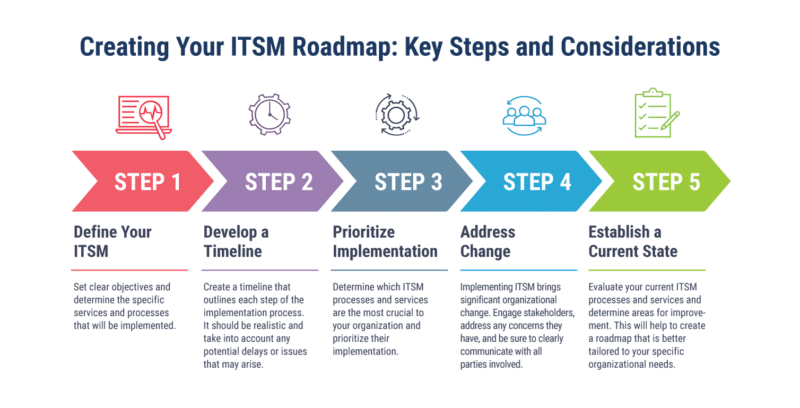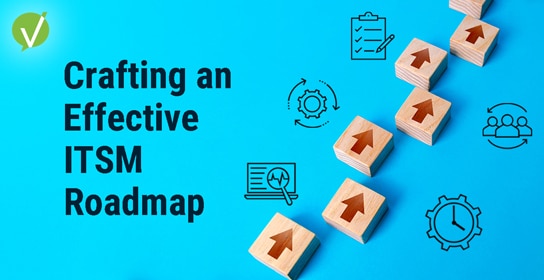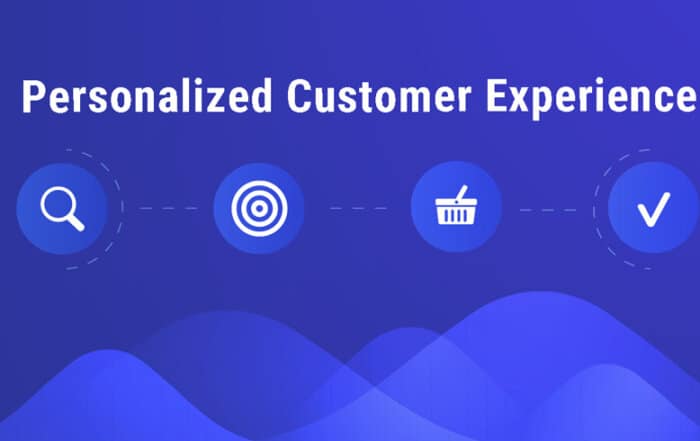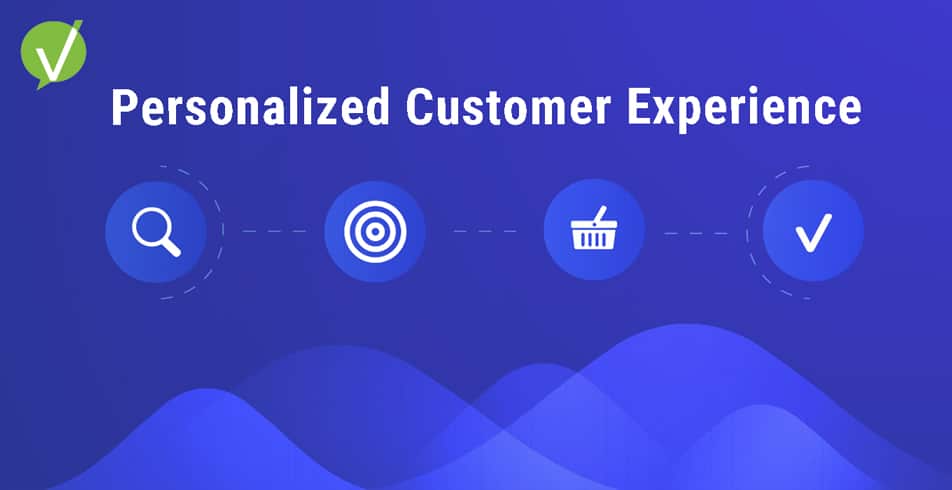Crafting an Effective ITSM Roadmap: A Template for Success
Introduction
Key Takeaways:
- An ITSM roadmap is a crucial document that outlines your implementation strategy, timeline, and priorities.
- Using a customizable ITSM roadmap template will help ensure you plan, execute, and succeed in your IT journey while meeting your tailored needs.
- Creating an effective ITSM roadmap will keep you on track and ensure you deliver IT services that align with your business goals.
- Your ITSM roadmap should address organizational change, involve stakeholders, and establish a high-level understanding of your current state of ITSM processes.
- With the provided template, you’ll be ready to create an effective roadmap that suits your organization’s specific needs and maximizes effectiveness.
Welcome to our guide on crafting an effective ITSM roadmap! In today’s fast-paced business world, it’s more important than ever to have a clear plan in place to manage your IT journey while ensuring organizational success. This guide will introduce you to a user-friendly ITSM roadmap template that will help you plan, execute, and succeed in your IT journey while meeting your tailored needs.
Whether you’re working on a new ITSM initiative or looking to improve your current processes, creating a well-crafted ITSM roadmap is essential. It’s a crucial document that outlines your ITSM implementation strategy, timeline, and priorities. An effective roadmap will keep you on track and ensure you deliver IT services that align with your business goals.
At the core of our guide is a customizable ITSM roadmap template that will help you address organizational change, involve stakeholders, and establish a high-level understanding of your current state of ITSM processes. With this template, you’ll be ready to create an effective roadmap that suits your business’s specific needs and maximizes effectiveness.
Creating Your ITSM Roadmap: Key Steps and Considerations
To ensure a successful ITSM implementation, you need a roadmap template that guides you through the entire process. Here are the key steps to take when creating your ITSM roadmap:

- Define your ITSM implementation strategy: Set clear objectives and determine the specific services and processes that will be implemented.
- Develop a timeline: Create a timeline that outlines each step of the implementation process. This timeline should be realistic and take into account any potential delays or issues that may arise.
- Prioritize: Determine which ITSM processes and services are the most crucial to your organization and prioritize their implementation
- Address organizational change: Implementing ITSM can bring about significant organizational change. It’s crucial to engage stakeholders, address any concerns they may have, and communicate clearly with all parties involved.
- Establish a high-level understanding of the current state: Evaluate your current ITSM processes and services to determine where improvements can be made. This will help you create a roadmap that is tailored to your specific organizational needs.
A well-crafted ITSM roadmap should also take into account stakeholder involvement, as they play a key role in ensuring successful implementation. By involving stakeholders throughout the process, you can ensure that the roadmap is aligned with their needs and expectations.
In addition, your ITSM roadmap should also provide a high-level overview of the current state of your ITSM processes. This will help you identify areas where improvements can be made and ensure that the roadmap is tailored to your organization’s specific needs.
Overall, a well-planned ITSM roadmap is critical to the success of your implementation. By following these key steps and taking into account important considerations such as prioritization, organizational change, and stakeholder involvement, you can ensure that your ITSM implementation is a success.
The Importance of ITSM Roadmap in Service Management Implementation
If you want to deliver IT services that meet your organizational needs, you’ll need to implement IT Service Management (ITSM) strategies. However, a successful ITSM implementation requires more than just a strategy. It also needs a roadmap. Having an ITSM roadmap can help you plan, execute, and deliver your ITSM initiatives effectively.
Your ITSM roadmap is a strategic plan that outlines the key steps and deliverables necessary for successful ITSM implementation. It serves as the foundational framework for your service management initiative. With an ITSM roadmap, you can:

- Develop a clear ITSM implementation strategy
- Align ITSM with organizational objectives
- Deliver ITSM initiatives efficiently
- Address organizational change management issues
- Measure ITSM maturity level
Your ITSM roadmap must be agile and adaptable to fit your organizational needs. It must be customized to ensure its effectiveness in improving your ITSM processes over time. A well-crafted ITSM roadmap is foundational to successful ITSM implementation and maturation.
The Importance of Strategy in ITSM Roadmap
Your ITSM roadmap must have a well-defined strategy that aligns with your organizational objectives. Effective strategy development requires a deep understanding of your organization’s business and ITSM goals. Your ITSM roadmap strategy must enable agility and support your service management initiatives to deliver a value-driven approach to your organization. It must also be tailored to match your ITSM maturity level.
Delivering ITSM Initiatives Efficiently
Your ITSM roadmap should include an initiative plan that outlines each step in the implementation process. You must deliver your initiatives efficiently, minimize delays, and reduce overall project costs. Your ITSM roadmap must include a timeline that outlines when each initiative should be completed. It should also prioritize key initiatives that help you achieve your ITSM goals faster.
Addressing Organizational Change Management Issues
Change management is critical to successful ITSM implementation. Your ITSM roadmap must address organizational change management issues by engaging stakeholders and involving them in the implementation process. You must leverage ITSM best practices and ensure that your stakeholders understand the benefits of the initiative. Effective communication and informed decision-making can help overcome resistance to change and foster successful ITSM adoption.
Measuring ITSM Maturity Level
Measuring the maturity level of your ITSM processes is essential to understanding the effectiveness of your ITSM roadmap. Your ITSM roadmap should have deliverables that help measure ITSM maturity level and identify areas that require improvement. These deliverables could include incident management, change management, or problem management metrics. Proper reporting of this data is essential to measure ITSM effectiveness and adjust strategies over time.
Having an ITSM roadmap is foundational to successful ITSM implementation and maturation. It enables you to plan, execute, and succeed in your IT journey. Your ITSM roadmap must be tailored to fit your organizational needs and aligned with your strategic objectives to deliver optimal results. In the next section, we’ll discuss the key steps and considerations for creating your ITSM roadmap.
Customizing Your ITSM Roadmap to Meet Your Business Goals
Creating an ITSM roadmap is only the first step towards successful implementation. To truly achieve IT success, your roadmap needs to align with your strategic business goals and cater to your specific organizational needs. This requires customizing your roadmap template to incorporate the necessary changes and adjustments.
One critical aspect of customizing your ITSM roadmap is addressing organizational change. Every business is unique, and the way your organization functions will differ from others. Your ITSM roadmap needs to take into account these differences and tailor the implementation plan accordingly.
To meet your business goals, it is essential to consolidate your service catalog and implement a Configuration Management Database (CMDB). Doing so will provide a foundational structure for delivering efficient services. If you need help with this, you can utilize resources to help in the form of consultants or advisory services. Attending webinars can also be useful to stay up-to-date with the latest industry trends and best practices.
To ensure that your ITSM roadmap meets specific needs and integrates with your current systems, you should engage with key stakeholders to gather feedback and input. By involving the right people in the process, you can build a strategic ITSM roadmap that delivers results in line with your business objectives.
Actions |
Benefits |
|---|---|
| Prioritize your business goals while customizing your roadmap template | Aligns your ITSM initiatives with strategic business objectives |
| Consolidate your service catalog and implement a Configuration Management Database (CMDB) | Provides a foundational structure for delivering efficient services |
| Utilize resources to help, such as consultants, advisory services, and webinars | Stay up-to-date with industry trends and best practices for effective ITSM implementation |
| Engage with key stakeholders to gather feedback and input | Build a strategic ITSM roadmap that meets specific needs and integrates with current systems |
By customizing your ITSM roadmap to meet your business goals, you can achieve IT success while effectively serving the needs of your organization. Take advantage of the provided ITSM roadmap template and ensure that it is tailored to your specific requirements for maximum effectiveness.
Visualizing Your ITSM Roadmap: Utilizing Gantt Charts and PowerPoint
Visualizing your ITSM roadmap is crucial in effectively communicating your strategy to stakeholders. Two effective tools for visualizing your roadmap are Gantt charts and Microsoft PowerPoint presentations.
Utilizing Gantt charts
A Gantt chart is a visual representation of a project timeline that helps track progress and dependencies. To create a Gantt chart in Microsoft PowerPoint:
- Select the Insert tab, click on the SmartArt option, and choose the Process category
- Choose a Gantt chart style that best fits your roadmap and customize it to your needs
- Add tasks and adjust their timelines as necessary
- Add dependencies between tasks to ensure a harmonized workflow
Ensure your Gantt chart is clearly labeled and easy to read. Use colors to distinguish different tasks and completion status.
Utilizing Microsoft PowerPoint
PowerPoint is a powerful presentation tool that can be used to showcase your ITSM roadmap to stakeholders. To effectively present your roadmap using PowerPoint:
- Create a visually engaging slide deck that highlights the key components of your roadmap
- Use data visualization techniques, such as graphs and diagrams, to showcase progress and milestones
- Use clear and concise language to explain complex ITSM concepts and strategies
- Include a summary slide that highlights the key points of your roadmap
Remember to use a consistent design throughout your presentation and keep your audience in mind when creating your slides.
Ensuring Successful ITSM Adoption: Best Practices and Key Change Agents
Implementing an ITSM roadmap requires careful planning and execution to ensure successful adoption within your organization. In this section, we will explore some best practices and identify key change agents to help you achieve your ITSM objectives.
Define clear objectives
Before embarking on the ITSM implementation journey, it is essential to define clear objectives to guide your efforts. Your objectives should be in line with your organization’s overall goals and mission, and they should be communicated clearly to all stakeholders involved. By setting clear objectives, you can ensure that everyone is aligned and working towards the same end goal.
Engage stakeholders
Stakeholder engagement is vital to the success of your ITSM implementation. Identify and involve stakeholders from across your organization to ensure that everyone’s needs are considered, and the ITSM solution meets their requirements. Stakeholders can include project managers, business analysts, service desk managers, and IT operations teams. By involving stakeholders early and often, you can ensure buy-in and support for your ITSM initiative.
Leverage experience in service management
ITSM implementation requires expertise and knowledge of service management. Leveraging experience in service management can help you to develop and execute a more effective ITSM strategy. A consultant or advisory service can provide valuable insights, expertise and guidance on ITSM best practices and how to adapt them to meet your specific needs. Additionally, attending webinars and conferences on service management can help to keep you up-to-date with the latest trends and developments in the industry.
Involve project managers and build a strong support team
Project managers play a critical role in successful ITSM adoption. They can provide guidance on project planning, execution, and monitoring to ensure that your ITSM initiative stays on track. In addition, building a strong support team is essential to ensure that your ITSM solution is effectively managed and maintained. Your support team should be trained on ITSM processes, tools, and capabilities to provide timely and effective support to end-users.
Identify key change agents
Finally, identifying key change agents within your organization can help to drive successful ITSM adoption. Change agents are individuals who have the ability to influence others and promote change within your organization. They can include executives, managers, supervisors, and team leaders who are committed to creating a culture of excellence and continuous improvement. By harnessing the influence of these key change agents, you can accelerate the adoption of your ITSM solution and ensure long-term success.
Addressing ITSM Challenges: Problem Management and Configuration Management Database
Implementing ITSM can present several challenges, including problem management and the creation of a configuration management database (CMDB).
Problem management is the process of identifying and resolving issues that arise in your IT infrastructure. It involves analyzing the underlying root cause of the problem and finding a long-term solution to prevent it from happening again. However, problem management can be difficult to implement effectively without the right tools and processes in place.
One of the essential tools for successful ITSM implementation is a configuration management database (CMDB). A CMDB is a central repository that stores information about an organization’s IT infrastructure, including hardware, software, and network components. It helps organizations manage and track IT assets and provides a foundation for incident, problem, and change management processes.
However, creating a CMDB can be a complex undertaking that requires significant resources and expertise. It can also be challenging to ensure compliance with ITSM standards and best practices when creating and maintaining a CMDB.
To address these challenges, it is important to utilize resources to help guide you through the implementation process. There are many resources available, including ITSM consultants, webinars, and advisory services, that can assist with problem management and CMDB creation. These resources can provide guidance on best practices, help tailor your ITSM roadmap to your specific needs, and ensure compliance with ITSM standards.
Overall, effective problem management and CMDB implementation are critical components of a successful ITSM journey. By utilizing resources available and ensuring compliance with ITSM standards, you can overcome these challenges and achieve ITSM success.
Measuring Success: Tracking ITSM Maturity and Delivering Efficient Services
Tracking your ITSM maturity is critical to delivering efficient and effective services to your customers. By utilizing the ITSM roadmap template, you can identify where your organization currently stands in terms of maturity and where you need to improve.
Maturity level is measured through the successful execution of service management processes such as incident management, change management, and problem management. By evaluating your organization’s performance in these areas, you can identify areas for improvement and create a roadmap for change.
One of the major benefits of implementing an ITSM roadmap is the potential for significant cost savings. By improving incident management and reducing service downtime, you can save your organization substantial amounts of money. For example, a recent study found that implementing ITSM resulted in an average savings of $2.7 million per year for enterprise companies.
Effective service management also leads to increased efficiency and productivity within your support team. By utilizing the roadmap template, you can ensure that your team is delivering IT services in a consistent and high-quality manner, ultimately leading to customer satisfaction and a culture of excellence within your organization.
Measuring Your Maturity: Creating a Visual Representation
One effective way to visualize your organization’s ITSM maturity is through a maturity model. A maturity model details the different levels of maturity that an organization can achieve in areas such as service management processes and ITSM implementation strategy.
Creating a maturity model can be done using the ITSM roadmap template, and it can be used to guide your organization toward growth and improvement. By utilizing a maturity model, you can easily track your progress and identify where your organization needs to focus its efforts.
Delivering Efficient Services: Utilizing the ITSM Roadmap
The ITSM roadmap template is designed to help your organization deliver efficient IT services. By following the roadmap and leveraging the tools and resources provided, you can ensure that your organization is performing at its best.
The roadmap can help you prioritize your service management initiatives and ensure that they are aligned with your business goals. By identifying which initiatives are most critical, you can focus your efforts on delivering high-quality services that meet the needs of your customers.
Additionally, the roadmap can help you develop a strong support team. By outlining clear roles and responsibilities and providing the necessary training and resources, you can ensure that your team is performing at a high level and delivering excellent service to your customers.
Continuous Improvement: Adapting Your ITSM Roadmap for Long-Term Success
Congratulations on creating your ITSM roadmap! But remember, the success of your IT journey doesn’t stop there. Continuous improvement is essential to ensure long-term success and maximum efficiency. Here are some key steps to help you adapt your ITSM roadmap and improve your service delivery:
- Create a roadmap for new services: As your organization evolves, so will your IT needs. Creating a roadmap for new services ensures that you have a plan in place to implement new technologies and services as they are needed.
- Utilize consultants and advisory services: Bringing in outside expertise can provide valuable insights and help you overcome challenges in ITSM implementation. Consultants and advisory services can also provide training and support to help your team stay up-to-date on the latest industry trends and best practices.
- Attend webinars: Attending webinars and online training sessions allows you to stay informed on the latest developments in ITSM and learn from industry experts. These events can also provide opportunities to connect with other IT professionals and share experiences and insights.
- Set expectations within the organization: Communicate the importance of continuous improvement and encourage your team to embrace it. Establish a culture of innovation and encourage everyone to contribute ideas for improvement.
By continuously adapting and updating your ITSM roadmap, you can ensure that your organization stays ahead of the curve and delivers efficient and effective IT services. Remember, the roadmap template provided is just a starting point – use it as a guide to tailor your ITSM journey to meet your organization’s specific needs and goals.
The Importance of an Effective ITSM Roadmap
You now understand the importance of having an effective ITSM roadmap and how to create one using the provided template. By following the key steps and considerations outlined in this article, you can craft a tailored roadmap that aligns with your business goals and drives success in ITSM implementation.
Remember, the ITSM roadmap template is designed to be user-friendly and adaptable to your specific organizational needs. Utilizing visual tools like Gantt charts and PowerPoint presentations can help showcase your roadmap and communicate your ITSM strategy to stakeholders.
Ensuring successful ITSM adoption requires clear objectives, engaging stakeholders, leveraging experience in service management, and building a strong support team. Remember to address key challenges such as problem management and CMDB implementation and measure success by tracking maturity in service management processes, delivering efficient IT services, and fostering a culture of excellence within the support team.
Continuous improvement is crucial for long-term success, so create a roadmap for new services, utilize consultants and advisory services, attend webinars, and set expectations within the organization to ensure ongoing improvements in ITSM implementation.
By utilizing the ITSM roadmap template and following the best practices outlined in this article, you are on your way to IT success. Download the template now and start your ITSM journey!
To discover how Vivantio can support your business goals, reach out to our team today or sign up for a free demo.
FAQs
What is an ITSM roadmap template?
An ITSM roadmap template is a user-friendly tool that helps you plan, execute, and succeed in your IT journey. It is designed to be tailored to your specific organizational needs, ensuring maximum effectiveness.
Why is an ITSM roadmap important in service management implementation?
An ITSM roadmap is important in service management implementation as it helps strategize, deliver, and manage IT initiatives within an organization. It also emphasizes the importance of change management and agility in achieving organizational maturity and delivering key ITSM deliverables.
How do I create an ITSM roadmap?
To create an ITSM roadmap, follow these key steps and considerations: develop an ITSM implementation strategy, plan your timeline, prioritize initiatives, address organizational change, engage stakeholders, and establish a high-level understanding of the current state of ITSM processes.
Can I customize my ITSM roadmap to meet my business goals?
Absolutely! It is important to customize your ITSM roadmap to align with your specific business goals. Consider organizational change, strategic alignment, service catalog consolidation, CMDB implementation, and utilize resources to meet specific needs and integrate with current systems.
How can I visualize my ITSM roadmap?
You can visualize your ITSM roadmap using Gantt charts and PowerPoint presentations. These visual tools effectively showcase your roadmap and communicate your ITSM strategy to stakeholders. We provide tips on creating Gantt charts in Microsoft PowerPoint and utilizing a Gantt chart style for optimal visualization.
What are the best practices for ensuring successful ITSM adoption?
To ensure successful ITSM adoption, follow these best practices: set clear objectives, engage stakeholders, leverage experience in service management, involve project managers, and build a strong support team. These key change agents will help drive successful adoption within your organization.
How can my ITSM roadmap address challenges like problem management and configuration management database (CMDB) implementation?
Your ITSM roadmap can address challenges like problem management and CMDB implementation by utilizing available resources and ensuring compliance with ITSM standards. We provide guidance and support to help you overcome these challenges and achieve success in your ITSM implementation.
How can I measure success in my ITSM implementation?
You can measure success in your ITSM implementation by tracking maturity in service management processes, improving incident management, achieving cost savings, delivering efficient IT services, and fostering a culture of excellence within your support team. Your ITSM roadmap will help you achieve these goals.
How can I continuously improve my ITSM implementation using my roadmap?
Continuous improvement is key to long-term success in ITSM implementation. Use your roadmap to create a plan for new services, utilize consultants and advisory services, attend webinars, and set expectations within your organization. These actions will ensure ongoing improvements and success in your ITSM journey.
Where can I download the ITSM roadmap template?
You can download the ITSM roadmap template by [provide instructions on where to download the template]. Start your ITSM journey today with this user-friendly and tailored template for IT success.













